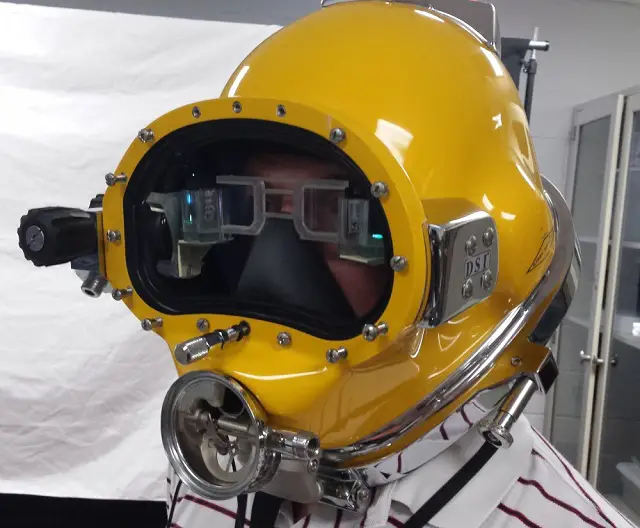Breaking news
Video: U.S. Navy Develops DAVD Head-Up Display for Divers.
| 2016
 Naval Surface
Warfare Center Panama City Division (NSWC PCD) lead engineer/senior electrical
engineer William Hughes III demonstrates the Divers Augmented Vision Display
(DVAD) during a lab simulation. U.S. Navy Photo by Richard Manley
Naval Surface
Warfare Center Panama City Division (NSWC PCD) lead engineer/senior electrical
engineer William Hughes III demonstrates the Divers Augmented Vision Display
(DVAD) during a lab simulation. U.S. Navy Photo by Richard Manley |
|||
According
to the US Navy, DAVD is a high-resolution, see-through, head-up display,
embedded inside a diving helmet and powered on or off by the user. The
information depicted on the display includes real-time view of the diver’s
location, text messages, diagrams, photographs or even augmented reality
videos. The user has also the option to reposition the information on
different parts of the display. This technology allows divers to carry out their mission with an increased situational awareness and accuracy, thus more effectively and safely. The system can serve different kinds of missions, such as ship husbandry, salvage operations or underwater construction, both in the military and the civilian sectors. |
|||
Diver
Augmented Vision Display (DAVD). US Navy video |
|||
Dennis
Gallagher, Underwater Systems Development Project Engineer at NSWC PCD
said “by building this HUD directly inside the dive helmet instead
of attaching a display on the outside, it can provide a capability similar
to something from an ‘Ironman’ movie. You have everything
you visually need right there within the helmet.” DAVD has already been presented to divers from across the Navy, as part of their engagement to make it better suited to their needs. The engineers are currently in phase two of the project. That is designing the components of the helmet and full-face masks, before October’s in-water tests. Following that, the third phase, which will take place in 2017, will expand the tests to make the final improvements and allow the various dive commands to use it extensively, before finally fielding it for operational use. Similar technologies are currently under development, according to the Strategic Plan for 2011-2025 of the Naval Sea Systems Command. New sensors are being designed, such as miniaturized high-resolution sonar and enhanced underwater video systems. These would allow divers to have a picture of their environment even with zero visibility. |
|||


























